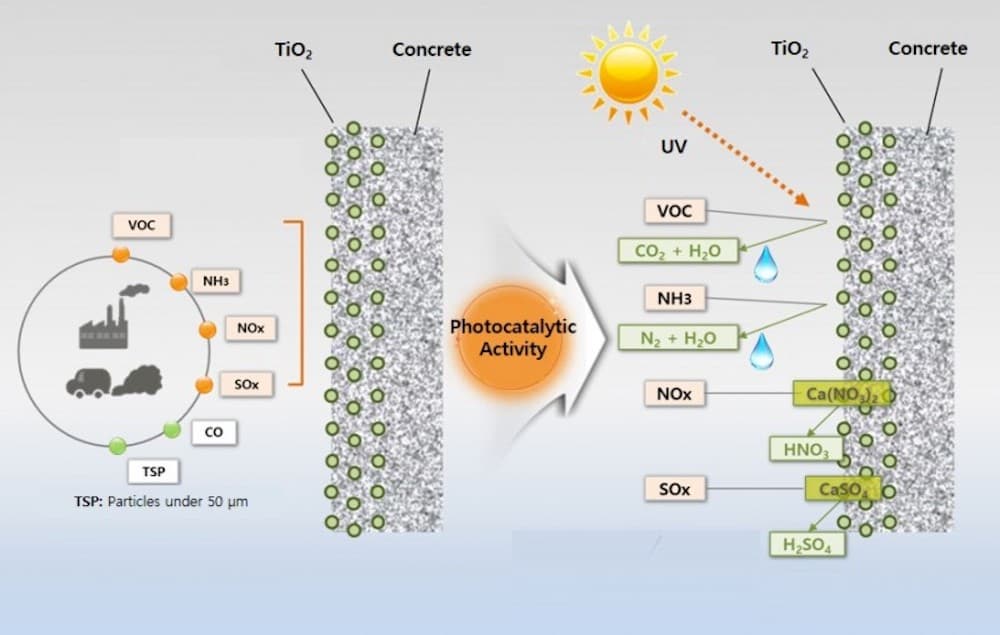Traffic is among the biggest sources of air pollution, but what if the very roads they drive on could help clear the air? Engineers in Korea have now demonstrated that photocatalytic concrete can help reduce pollution in tunnels.
While we need to transition to greener vehicles as soon as possible, it’s still going to take a few decades. In the meantime, finding other ways to slurp up that air pollution is important, so why not turn to the most common building material in the world to help? In recent years scientists have developed concrete that can convert some of the nasties in the surrounding air into harmless products.
These air-purifying concrete systems rely on a coating of titanium dioxide, which reacts to sunlight to produce molecules called reactive oxygen species (ROS). These have strong oxidizing power, which breaks down air pollutants like volatile organic compounds (VOCs), nitrogen oxides, sulfur oxides, and ammonia and prevents the formation of fine particulate matter.
In the new study, researchers at the Korea Institute of Civil Engineering and Building Technology (KICT) developed this kind of photocatalytic concrete and tested it in a traffic tunnel, where pollution is often higher due to poor air circulation. Artificial lights were installed along the walls to fuel the light-activated reactions in the concrete.

Korea Institute of Civil Engineering and Building Technology
The team found that levels of nitrogen oxides dropped by about 18% over 24 hours, and the end products of the reactions were salts, formed in part from the calcium content in the concrete. These salts were quickly washed away by rain. Better yet, the team says this process should allow the photocatalytic concrete to function indefinitely, without needing any extra maintenance beyond that of regular concrete.
The team plans to continue researching the technology to help get it commercialized and hopefully improve its effectiveness. Other examples have managed to reduce nitrogen oxide levels by 45%, or even an astonishing 70% when paired with graphene.
“Construction technology using photocatalysts can have an immediate effect on reducing fine particulate matter in the nation’s living environment” said Dr. Jong-Won Kwark, head researcher on the project. “We plan to build a system of cooperation with local governments and public corporations to expand trial demonstrations to other sites to achieve commercialization and distribution with practical effects.”
An earlier paper describing the photocatalytic concrete was published in the KSCE Journal of Civil and Environmental Engineering Research.
Source of Article